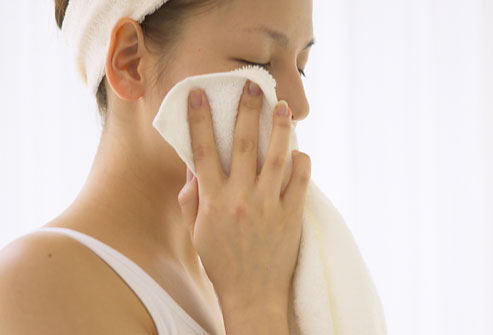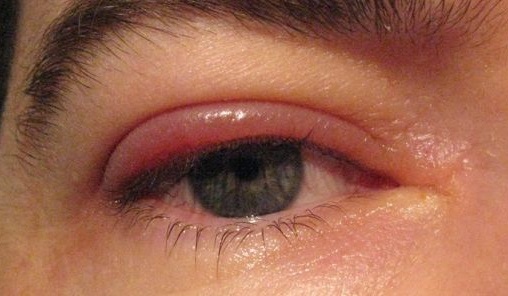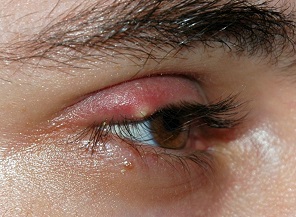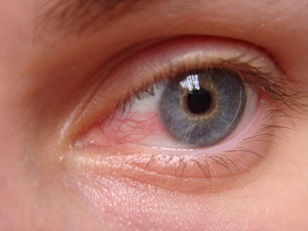It is not uncommon for your eye doctor to instruct you to use warm compresses for eye ailments. This is often the case if you suffer from dry eyes, an eyelid stye, Meibomian gland dysfunction or blepharitis. Applying a warm compress in these situations is very beneficial and helps ease your discomfort.
However, it is important to see your doctor if you are experiencing eye pain or discomfort because there are many conditions which can affect this area. Without a professional evaluation, you will not know if your ailment stems from a bacterial or viral infection, conjunctivitis, sinusitis, styes, allergies and so forth.
How Does Warm Compress for Eye Help?
Warm compress is especially helpful when you suffer from blepharitis and Meibomian gland dysfunction. These ailments cause eyelid debris to form on your eyelashes. The moisture from the warm compress will loosen it for easier removal. You do not want to tug and pull at your eyelids as you can cause serious damage. Additionally, warm compresses assist the glands in your eyelids to work normally. This is very important because it enables your eyelid glands to make more fluid oil and relieve dry eye problems. If you are suffering from a stye, applying a warm compress to your eye will help the body heal itself by increasing the blood flow to the area.
How to Apply Warm Compress for Eye
 The use of a warm compress is very common, but you may also have a need for medication or other forms of treatment.
The use of a warm compress is very common, but you may also have a need for medication or other forms of treatment.
To apply a warm compress for your eye, follow these steps:
- Thoroughly wash your hands before handling the warm compress so you do not transfer germs.
- Get a soft, clean cloth about the size of a washcloth and fold into thirds lengthwise.
- Turn on tap water so that it runs warm and fill a small to medium size bowl with the water.
- Put the folded washcloth in the bowl and thoroughly wet it.
- While bending over a sink or towel, take the folded washcloth out of the bowl. Do not squeeze the excess water from the cloth. Go straight to gently pressing it on your affected eye, keeping it closed. Put the washcloth back in the water every 10-15 seconds to keep it warm. Reapply to your eye. Repeat these steps for about five minutes.
Important Notes
Always close your eyes before applying the warm compress. Also, make sure the washcloth is warm, not hot or you may cause more irritation or burn the area. You can test the temperature of the compress by pressing it to your arm first. If it is too hot to handle, you can let it cool for a couple of minutes and then test it again before pressing it to your eyes.
Other Remedies to Help Your Eye
There are several other remedies besides applying a warm compress for eye conditions. Your doctor may instruct you to take other measures depending on the ailment.
For Blepharitis
 If you suffer from blepharitis, you may be instructed to do the following:
If you suffer from blepharitis, you may be instructed to do the following:
- Clean your eyelids. Your eye doctor will tell you if you need to buy special solution or wipes. If not, make sure the water you use to clean your eyes is clean and free of bacteria or germs. You can do this by boiling the water first, letting it cool and then washing your eyelids. A very small amount of baby shampoo can be added to the water. If you end up using a cleaning wipe, swipe your eye with it from the inside to the outside corner of your eyelid. Do not touch the inside of your eye when doing this. Start by doing this twice a day and as your eye gets better, you can reduce to once a day.
- Keep your eyes moist with lubricants. After you clean your eyelids, you can apply an eye ointment to your eyelid edges. Sometimes it is best to apply the ointment or lubricant inside your lower eyelid. Your eye doctor will tell you the best way to apply based on your condition.
- Sometimes you may have to take oral antibiotics. This often happens if none of the other treatments work. You may have to take the medicine by mouth for weeks or months, depending on the severity of your eye condition. If your problem returns, you may have to take another round of the antibiotics.
For Styes
 If you have a stye, there are several methods you can use to rid yourself of the condition.
If you have a stye, there are several methods you can use to rid yourself of the condition.
- First of all, your hands must be clean. Use an antibacterial soap and hot water to wash your hands before touching your eyes. Wash again after applying treatment or compress so that you do not transfer the infection to others or even your unaffected eye.
- Try over-the-counter treatments for styes. Since a stye is caused by an eye infection, if you treat the infection it should resolve itself. There are medicated pads, creams and ointments available for purchase. It is also important to confirm the products are made for eye use. Avoid products that promise miracles such as overnight results. It usually take 2-4 days to see results.
- Do not squeeze your stye. It may be very tempting to try and squeeze it to drain the pus or infection. However, if you rupture it your infection may spread or get worse. Also, it opens up the stye to other bacteria that can spread into your eye and cause additional problems. Apply a warm compress for eye discomfort and overtime the stye should rupture on its own.
- Do not wear eye makeup while treating a stye. Eye liner, mascara and eye shadow will most likely irritate your eye even more and make your condition worse. You will need to throw away all your eye makeup to avoid reinfection of your eyes.
For Dry Eyes
 Dry eyes are a common ailment and are not always associated with an infection. There are several environmental factors that can dry out your eyes as well. To find relief, you can try several methods.
Dry eyes are a common ailment and are not always associated with an infection. There are several environmental factors that can dry out your eyes as well. To find relief, you can try several methods.
- Avoid adverse environments. If you can, stay away from people while they are smoking, avoid going outside when it is windy and dusty and keep away from campfires that emit large amounts of smoke. If you have to be in these environments, use protective eyewear. It also helps to use a humidifier at home or work for additional moisture in the air.
- Add fatty acids to your diet. Studies have found that people who consume omega-3 fatty acids find better relief for dry eyes. Fatty acids tend to reduce inflammation and may help by reducing eye irritation. When your eye is not inflamed, it is able to produce more tears. You can find omega-3 fatty acids in fatty fish like salmon and tuna, walnuts, and different oils like palm, flaxseed and soybean.
- Often, using over-the-counter eye drops can temporarily relieve your dry eyes. There are several brands available at your local drug store. It is important to note that some drops contain preservatives and your eyes may be sensitive to these ingredients. If this is the case, you can buy non-preservative eye drops and see if they work better for you.
- You can also try using ointments made to relieve eye dryness. They are thicker than drops and coat your eyeball when applied. However, because they are thick in nature, they may affect your vision. Sometimes it is better to use the ointment at night and drops during the day.
